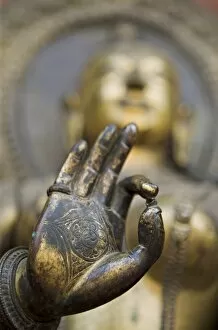Signaling Collection (#8)
"Signaling: A Multifaceted Language of Communication" From ancient statues to maritime flags, it has been an integral part of human communication throughout history
For sale as Licensed Images
Choose your image, Select your licence and Download the media
"Signaling: A Multifaceted Language of Communication" From ancient statues to maritime flags, it has been an integral part of human communication throughout history. The Buddha statue from 1790 stands tall, its serene expression signaling inner peace and enlightenment. Meanwhile, the thunderous roar of an A10 Thunderbolt II taxiing down Bagram Air Field signals power and military might. In a quaint antiques shop in Sheung Wan, Hong Kong Island, figurines of Chairman Mao catch the eye - their presence serving as a signal to China's complex political history. Similarly, Utagawa Kuniyoshi's masterpiece "Nichiren Calming the Storm" depicts a powerful message through artistry - illustrating how even nature can be tamed by faith. Nature itself is not exempt from signaling either. In the Rocky Mountains of Montana, a white-tailed deer raises its tail high to alert fellow deer about potential danger nearby. This instinctual signal ensures their safety in the vast wilderness. Religious symbolism also plays a significant role in signaling. The standing Buddha statue emanates tranquility and spiritual guidance while Rogier Van der Weyden's painting "Christ Appearing to His Mother" conveys divine reassurance during times of hardship. Maritime communication relies on signal flags like those representing numbers or letters. These international code signals enable sailors worldwide to convey vital information across language barriers with just a few colorful banners fluttering in the wind. Artistic expressions further enrich our understanding as Abraham Govaerts' "Rocky Landscape with Saint Francis" transports us into a world where nature becomes both backdrop and messenger for religious devotion. On another note entirely, Kitagawa Utamaro's "Lovers in an Upstairs Room, " taken from The Poem of the Pillow series, subtly signals intimacy and desire within Japanese culture.











